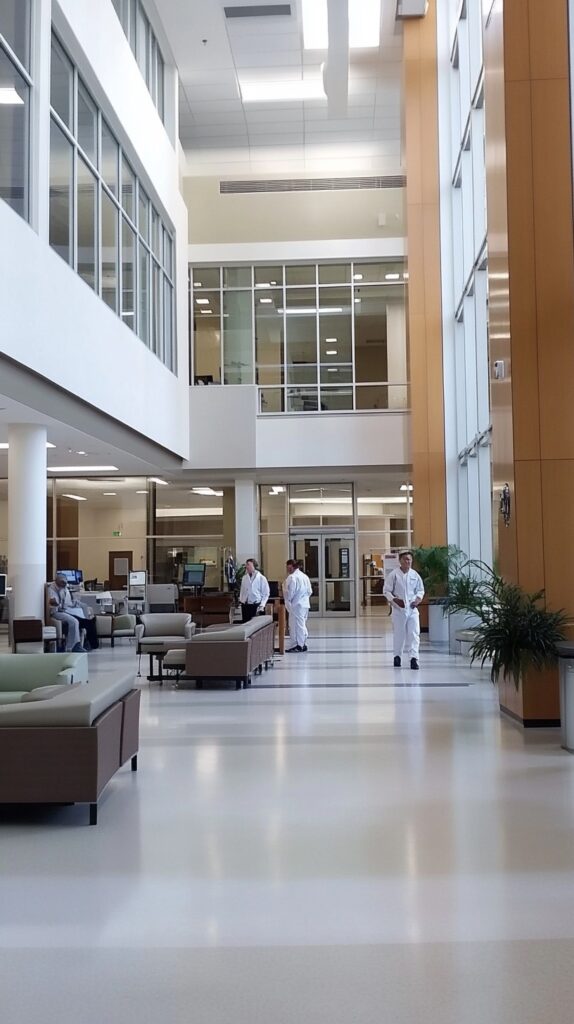Healthcare is increasingly becoming a critical player in the commercial real estate (CRE) world. As populations grow and age, and medical technology advances, the demand for modern healthcare facilities is transforming the CRE landscape. Medical offices, clinics, and specialized healthcare centers are now some of the most sought-after properties. Let’s take a closer look at the unique role healthcare plays in CRE and how the sector is poised for future growth.



Why Healthcare and CRE Are a Perfect Match
Healthcare is one of the most stable and resilient industries. Unlike retail or office sectors, which can fluctuate with economic downturns, the need for healthcare services remains constant or even increases during challenging times. This reliability makes healthcare facilities a prime asset class for CRE investors and developers.
Medical office buildings (MOBs) and clinics offer long-term leases with financially strong tenants, such as hospitals, doctors, or healthcare systems. These facilities are also uniquely designed to meet specific needs—whether it’s accommodating medical equipment, ensuring patient comfort, or providing easy access for staff and patients. For CRE professionals, this translates into a steady, reliable revenue stream and less vacancy risk.
Key Trends Driving Healthcare in CRE
- Aging Population
The U.S. population is aging, with more people requiring healthcare services as they get older. This demographic shift is driving demand for a wide range of medical services, from general practice clinics to specialty care like cardiology or oncology. As baby boomers age, the demand for conveniently located, modern healthcare spaces will continue to rise. - Rise of Outpatient Care
With advancements in medical technology and patient preferences shifting toward convenience, outpatient care is becoming the norm. Many procedures that once required hospital stays are now handled in outpatient clinics or surgery centers. As a result, there’s increasing demand for smaller, specialized medical offices located closer to where patients live and work. - Telemedicine and Hybrid Models
While telemedicine has been around for years, the COVID-19 pandemic accelerated its adoption. Many healthcare providers now offer hybrid models, combining virtual consultations with in-person visits. This shift is changing the type of spaces healthcare providers need. Smaller physical footprints for clinics, combined with robust IT infrastructure, are becoming essential to support this blended model. - Retail-to-Healthcare Conversions
The decline of brick-and-mortar retail has left many commercial spaces vacant, especially in malls and shopping centers. Healthcare providers are taking advantage of these spaces, converting former stores into clinics or urgent care centers. These locations offer easy accessibility and high visibility, making them ideal for healthcare facilities seeking to serve local communities.
Challenges in Healthcare CRE
While healthcare real estate offers many opportunities, it also comes with unique challenges:
- Regulatory Requirements
Healthcare facilities must adhere to stringent regulatory requirements, from ADA compliance to ensuring patient privacy under HIPAA. CRE developers need to be familiar with these regulations to design and build spaces that meet these high standards. - Specialized Infrastructure
Medical facilities require specialized infrastructure, including advanced HVAC systems, medical-grade plumbing, and reinforced flooring for heavy equipment like MRI machines. These added requirements can increase construction and maintenance costs. - Location Sensitivity
Medical offices and clinics need to be strategically located near hospitals, transportation hubs, or densely populated areas. Patients and healthcare staff alike expect easy access to these facilities, making location a crucial consideration.
The Future of Healthcare in CRE
The future of healthcare in commercial real estate looks promising. As healthcare providers continue to shift toward patient-centric care, the demand for flexible, well-located medical facilities will grow. Here are some forward-looking trends:
- Wellness-Focused Facilities
Beyond traditional medical care, there is a rising demand for wellness centers that combine fitness, nutrition, mental health, and preventative care services under one roof. These facilities cater to a growing market of health-conscious consumers looking for holistic solutions. - Mixed-Use Developments
Medical offices are increasingly being integrated into mixed-use developments, creating a one-stop-shop for patients who can access healthcare, retail, dining, and other services all in one location. This concept of “healthcare within lifestyle centers” is becoming more popular, especially in urban environments. - Sustainability in Healthcare Real Estate
Sustainable design and green building practices are becoming more important in healthcare. Energy-efficient buildings and environmentally conscious designs are not only cost-effective but also improve patient outcomes by providing healthier indoor environments.
Conclusion: Healthcare CRE—A Growing Investment Opportunity
As healthcare needs evolve, so too does the commercial real estate sector. Medical office buildings, clinics, and specialized healthcare facilities are transforming the traditional CRE landscape by providing stability, long-term growth, and community impact. For investors and developers, healthcare real estate offers a resilient asset class that promises strong returns and future potential.
Whether you’re a healthcare provider looking for your next location or a CRE professional seeking new opportunities, the intersection of healthcare and real estate is filled with exciting possibilities for growth and innovation.

